There’s an amazing phenomenon that’s taken place in the NHL in recent years that may have more to do with actual correlation than simple happenstance.
Before getting into the Boston Bruins and how this phenomenon affects them moving forward, it’s important to understand what we’re even talking about here
Related: Bruins 2019 Offseason Outlook
When looking at the goalies that have won the Stanley Cup since 2010, only one played in more than 58 games during the regular season for their club.
The 58 game mark isn’t just a random number pulled out of a hat, rather, it represents roughly 70% of a team’s full 82-game schedule. Playing 58 games in a season typically will rank a goalie at around the 15th mark as far as games-played is concerned.
When omitting Jonathan Quick’s 2011-12 campaign that saw him play in 69 regular-season games in what was the best season of his career, boasting a .928 save percentage, 1.95 goals-against average, 28.08 goals saved above average (GSAA) while winning the Stanley Cup and Conn Smythe Awards, every starting goalie to hoist the Stanley Cup over the last 10 years has played in under 70% of their team’s games.
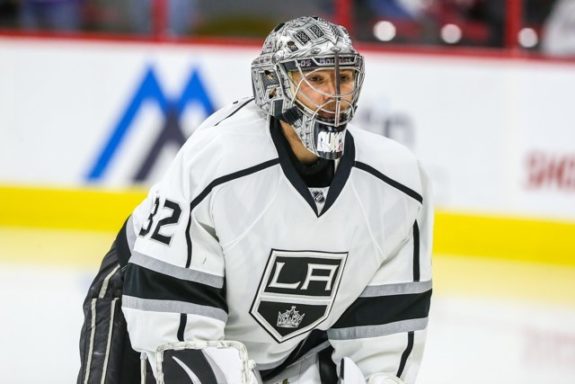
Included in that list are Antti Niemi, Corey Crawford (who did so twice), Tim Thomas, Jonathan Quick, Matt Murray (twice), Braden Holtby and most recently Jordan Binnington.
The stat doesn’t just relate to Stanley Cup-winning goaltenders either as it can also be found in terms of general success for teams as well. Having a workhorse goaltender isn’t a bad thing, but teams that have been able to share the load in a more even way have generally found more success in recent years.
The topic was discussed and analyzed in-depth by Zeke, formerly of The Hockey Writers, and provides a lot of information on the workload of goaltenders in relation to the Stanley Cup.
This is where the Bruins and Jaroslav Halak are concerned.
Tuukka Rask Plays Better in a Tandem
In the past, the Bruins have used Tuukka Rask in a workhorse capacity to varying success. In 2012-13, Rask played in 36 out of the team’s 48 games in the regular season (good for 75%) before going to the Stanley Cup Final and ultimately losing in devastating fashion despite shining in the postseason prior to the Final round.
In that round, he’d boast a very impressive 1.88 goals-against average, .940 save percentage and 12.76 GSAA, making 715 saves on 761 shots and allowing just 46 goals in 22 games.
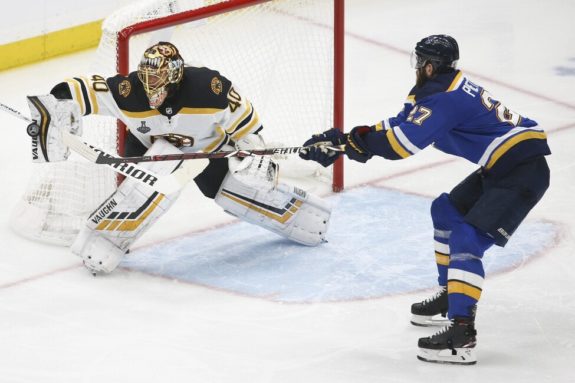
While Rask played in 75% of the team’s games, he was still relatively fresh compared to where a goalie would usually be in a normal 82-game season. It was also one of Rask’s all-around best seasons in the NHL, boasting a 2.00 goals-against average, .929 save percentage and 16.32 GSAA.
There was a stretch of time, however, that saw the Bruins play Rask in the vast majority of their games throughout the season, including a three-season stretch that saw him place in 70 games, 64 games and 65 games respectively in 2014-15, 2015-16 and 2016-17. In two of those seasons, the 2014-15 and 2015-16 seasons, the Bruins didn’t make the postseason. In 2017-18, they’d lose to the Ottawa Senators in six games.
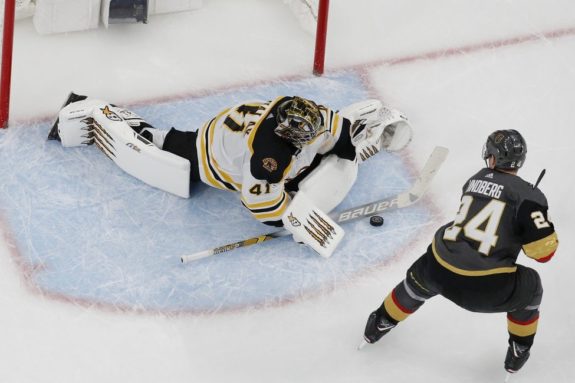
Interestingly enough, Rask was limited to just 54 games the following season and the Bruins would make it to the second round of the postseason before ultimately falling to the Tampa Bay Lightning.
Last season, Rask was the starter of the Bruins but that doesn’t necessarily mean he was always the undisputed best option in net for the team. He’d play in 46 games (starting 45) while Halak would play in 40 games, starting 37) and putting up better peripherals than Rask in general.
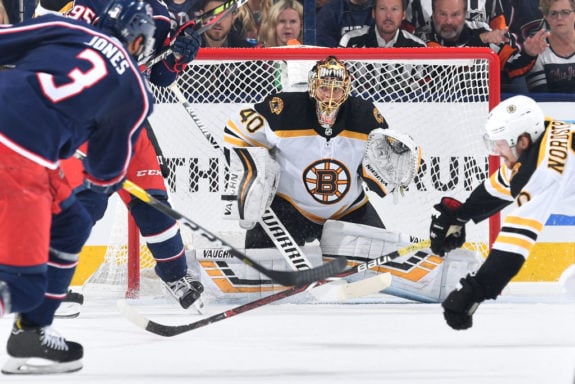
The duo became one of the league’s best tandems and would allow the Bruins to stretch Rask’s workload out with confidence due to Halak’s success.
It’s a luxury the Bruins haven’t had in a while and it’s the same reason many were upset that the team didn’t bring Anton Khudobin back when his contract expired last offseason.
It also led to Rask posting terrific numbers in the postseason once again, stopping 693 pucks on 742 shots and allowing 49 goals in 24 games. That would be good enough to give him a 2.02 goals-against average, .934 save percentage and a career postseason-high 13.04 GSAA.
Accounting for just $2.75 million against the Bruins salary cap for the 2019-20 season, Halak is simply a player the Bruins cannot move on from if they plan on competing for the Stanley Cup once again.
Bruins Goalie Depth Behind Rask and Halak is Thin
As it stands, the Bruin goaltending depth behind Rask and Halak is thin as far as NHL-ready talents are concerned. The team does newly-signed Maxime Lagace as well as both Daniel Vladar and Kyle Keyser who could be called up in a pinch should one of the Bruins two netminders get injured, but none of those options instill much confidence as long-term solutions for the 2019-20 season.
Of the three, Lagace is the only one to even play at the NHL level in his career. Lagace would skate in 16 games with the Golden Knights in 2017-18, posting a 6-7-1 record with a 3.92 goals-against average, .867 save percentage and -19.26 GSAA. He’d get just one opportunity to play in the NHL last season, coming away with a loss in a game that saw him allow four goals on 31 shots, good for a 4.03 goals-against average and .871 save percentage.
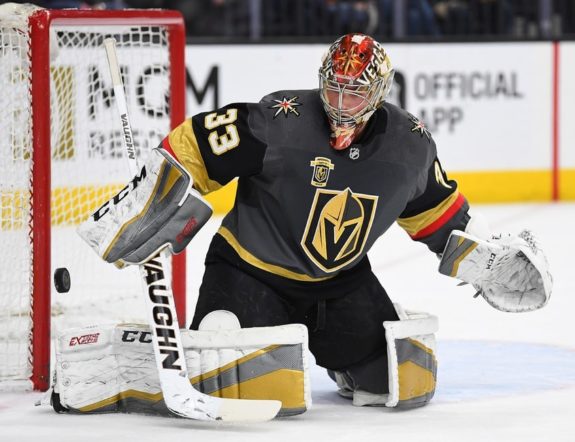
Even at the AHL level, Lagace’s peripherals haven’t done much to prove that he’s capable of playing in the NHL.
If the Bruins want to run two goalies and ensure that Rask is well-rested and can potentially replicate his 2019 postseason run, they’ll need a goalie who can be relied upon at the NHL level.
Halak’s Cap Hit is Invaluable
Another factor to consider is Halak’s aforementioned $2.75 million cap hit. At that range, Halak doesn’t need to play as well as he did last season. All the Bruins would need from him is consistency and reliability without the expectation that he’ll take over as the starting goaltender.
It’s unfair to hold Halak to his 2018-19 standards. If he can play at his career-level that boasts a 2.49 goals-against average and .916 save percentage, that should be more than enough for the Bruins to justify his sub-$3 million cap hit.
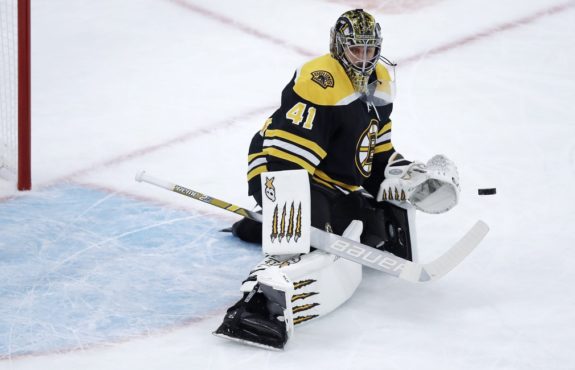
At this stage in the offseason, it wouldn’t be easy to find a goalie who’s familiar with the system, the teammates and who has a proven track-record who could come in for cheaper via either trade or free agency with the former being the more likely route of the two.
Even then, the Bruins would have to move an asset to acquire such a player which would be less than ideal, to say the least.
With Charlie McAvoy and Brandon Carlo both in need of new contracts, it’s easy to brainstorm ideas that can free up cap space for the team in a pinch. Despite this, trading away a borderline starting-caliber goalie on a team-friendly deal for cap-relief isn’t the way to go.
There are other options for the team to explore to increase their current cap space total of just under $7.3 million and they’ll undoubtedly dip into some of those options for relief. Halak, however, is going to be a Bruin when opening day rolls around.